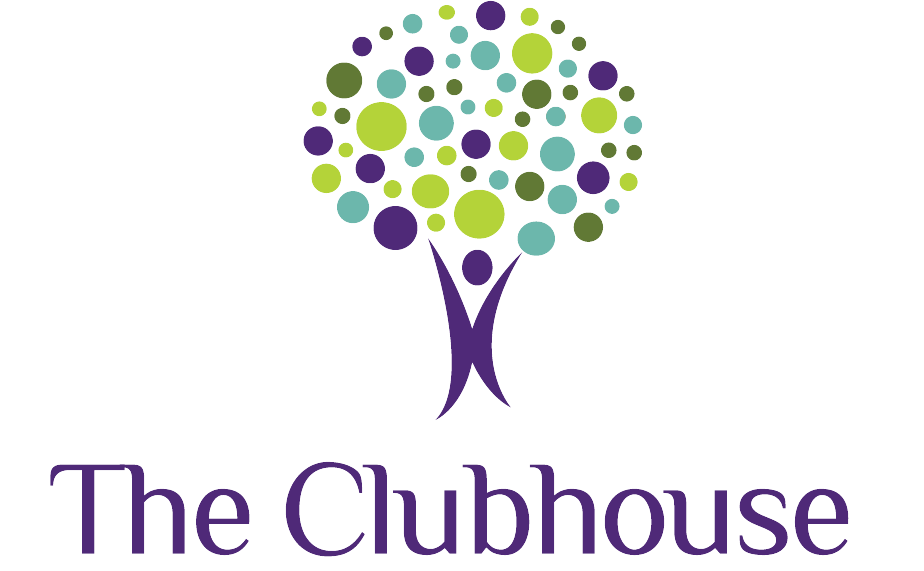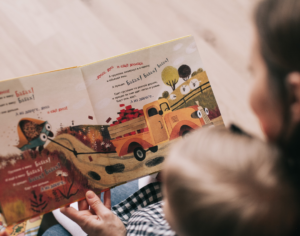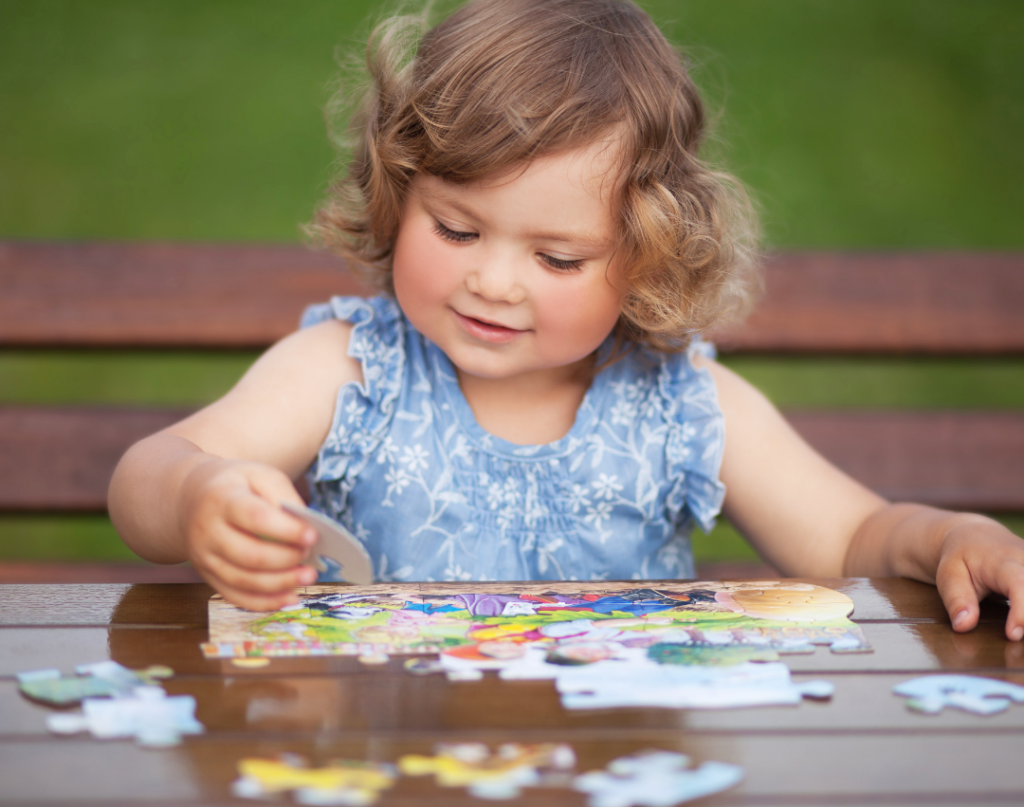Puzzles are excellent for learning how to match shapes and colors, but there are other early language concepts that we can teach our little ones with these timeless toys. Bring out your favorite puzzles and let’s get creative! Here are five activities that will have your child exploring language with the family. You know your child best, so cater these ideas to your child’s personality and preferences. Motivation is key!
Labeling– Puzzle pieces with single pictures are great for working on labeling. Simply naming the pictures can get boring though, so it’s our job to make it fun! Try making your own ramp with items around the house. For example, you can set a cookie sheet, board game, or the side of a cardboard box against the couch and have your child slide the pieces to you. After you catch it, hold the piece up to your face and label it. If your child tries to repeat, praise them! Then, give that piece back to your child so they can drop it into a container meaning you’re all done with that piece!
Requesting– Your child can actually target this language function by engaging with puzzles the “typical” way. Make sure to have control of the puzzle pieces which will prompt your child to ask for a piece to place on the board. Try holding up two at a time. When your child reaches for the preferred piece, model the sentence “I want _____.”
Sizes– Find a puzzle with big pieces and a puzzle with small pieces. Mix the pieces into a bucket/container. Have your child close their eyes, pull a piece out, and hand it to you. Then, practice naming the piece by size, big or small, and start a pile for each. Try facing the blank side toward your child so he or she doesn’t focus on grouping the pieces by their perspective board.
Categories– Many of the first puzzles that our little ones get are ones that match the piece to the pictures of fruits, animals, vehicles, etc. Without looking at the boards, mix the puzzle pieces from 2 or more sets and practice separating them by category. Model the name of the category each time a new piece is placed in a pile.
Location Words/Prepositions– For a comprehension task, hide puzzle pieces around the room and use prepositions to tell your child where to find the pieces. See if they understand when you use phrases such as “under the couch,” “next to the TV,” and “in the box.” For an expressive task, ask your child where they found the piece and prompt them to use prepositions. You can even give them options if they need help. “Was it in the box or under the box?”
As with all playtime, the most important thing is to make sure your child is having fun! If you feel frustration building, take a break—you can always come back to the puzzle. If you feel your child isn’t meeting their language milestones, please reach out to us and we can schedule a free screening with one of our Speech-Language Pathologists.
Written by Fatima Huizar, M.A., CCC-SLP



